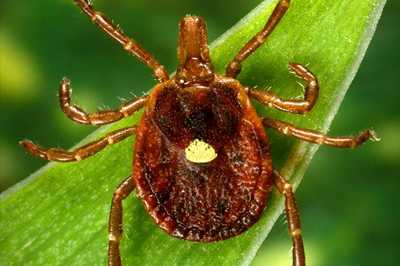AMD Project: Discovering and Tracking Tickborne Diseases
Using whole genome sequencing and metagenomics to identify and track tickborne pathogens

Organisms that cause tickborne diseases can be difficult to identify, but AMD can distinguish the specific bacteria present in a person’s blood and determine which tickborne infection made them sick.
For people who work and play outdoors, ticks can be a serious health threat. Public health officials estimate that millions of Americans seek medical care as a result of tick bites each year. Tick bites can cause serious infections, such as anaplasmosis, babesiosis, ehrlichiosis, Lyme disease, and spotted fever rickettsioses, and these can be deadly in some cases. Early diagnosis and treatment can save lives. Unfortunately, early symptoms of most tickborne diseases are similar and nonspecific. This can make it challenging for doctors to make a prompt diagnosis and recommend the right treatments.
Despite the health risks and need for rapid diagnosis, laboratory tests have not kept up with this urgent need. Organisms that cause tickborne diseases can be difficult to identify with standard laboratory methods. Consequently, doctors do not look for specific bacteria in blood tests, but instead look for antibodies against possible tickborne pathogens. But these methods have some limitations. For example, they might not uncover new pathogens. The need for more advanced testing is evident in recent discoveries. At least four new tickborne pathogens have been discovered in patients in the United States in recent years – two bacterial species, Borrelia miyamotoi and Ehrlichia muris-like agent; and two viruses, Heartland virus and Bourbon virus.
The implementation of advanced molecular detection (AMD) methods means that the current era of random tickborne pathogen discovery is drawing to a close. AMD methods can help scientists distinguish the specific bacteria present in a person’s blood and determine which tickborne infection they may be suffering from.
As part of this project, CDC is partnering with the Minnesota Department of Health, Mayo Clinic, and Vanderbilt University to obtain up to 30,000 clinical specimens from patients with suspected tickborne illness over a 3-year period. CDC will use AMD methods, including metagenomics screening and whole genome sequencing, to identify the specific tickborne bacteria that caused these patients’ illnesses. This multi-disciplinary project will build critical molecular and bioinformatics capacity that will help upgrade and modernize tickborne disease detection and surveillance in the United States.
2017 Project Update
In the project’s first two years, investigators collected approximately 14,000 clinical specimens from patients with suspected tickborne disease. Thus far, they have tested over 8,000 of those specimens for tickborne pathogens using AMD methods. And they have already seen success in a short time and demonstrated the power of next generation sequencing and bioinformatics for the detection of novel and existing tickborne pathogens. Early in the project, investigators used AMD to sequence the full genome of a newly discovered bacteria, Borrelia mayonii, which is a cause of Lyme borreliosis in the upper Midwestern states. Ultimately, data generated from this multi-year project will be used to modernize detection of and surveillance for novel and existing tickborne diseases in the United States.
- Page last reviewed: June 20, 2017
- Page last updated: June 20, 2017
- Content source:


 ShareCompartir
ShareCompartir